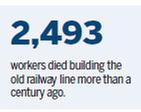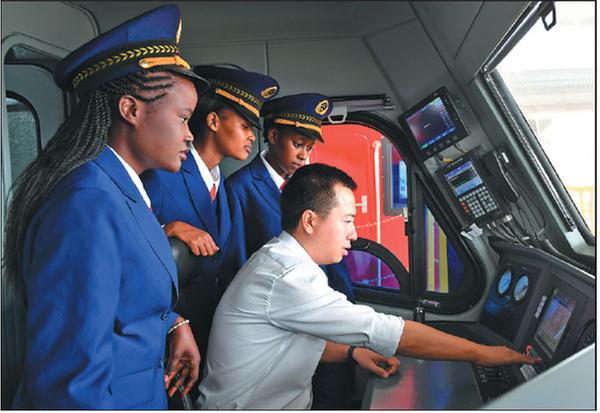Kenya's economy on track, gathering steam
China Daily | Updated: 2017-05-31 07:33
|
Kenyan students receive training on how to drive the train during a lesson with their Chinese teacher. The women will be among the first female train drivers in the African country's history. Xinhua |
China takes key role in African country's rail development
NAIROBI - A railway built by the British government to tighten control over its African colony eventually played a part in ending its rule. This is one oddity Kenya's meter gauge railway has left for historians.
In Nairobi's Railway Museum, Kenya's fond memories of its only operating railway are on display. The museum received more visitors recently as news of a Standard Gauge Railway to be opened soon sent curious locals here to find out "where they were, and where they are going" Curator Maurice Barasa said.
The meter gauge, initially called the Uganda Railway, was built between 1896 and 1901, a time when the land had yet to acquire the name Kenya. For British colonists, it was a vast yet insignificant land that stood between them and the rich resources in Uganda.

To open up Uganda, to tighten control over the "British East Africa" and to the then notorious slave trade, the British government decided to lay a rail line to link the port of Mombasa and Uganda. Yet investing heavily on a railway in Africa was deemed crazy by some British parliamentarians, one of whom wrote a poem calling the railway a "lunatic line".
So this is how the nickname "lunatic line" came into being - created by misinformed British politicians, some of whom had never been to Africa and underestimated the continent's potential, said Barasa.
Yet the sobriquet passed on for a number of reasons, including its extremely difficult construction by Indian workers sent to Kenya by the British authority.
"It was a very hard process. There was no machinery to do the construction as we see now. They (workers) often used their bare hands to carry the rails and do the actual building," Barasa said.
According to the museum, 2,493 workers had died by the time the 931-kilometer line finished construction, often prey to lions wandering in the savanna, tropical diseases like malaria and attacks by locals resisting the "iron snake" invasion.
Chasing fun
This would probably have surprised the British noblemen who later boarded the trains to chase fun as depicted in railway advertisements in the 1920s, one of which bid East Africa as "winter home for aristocrats" with a caricature showing a passenger playing with a lion like a pet cat.
They may be even more astonished to learn of the railway's association with Kenya's independence. "Using the railway, nationalists were able to travel from one end of Kenya to the other to join political rallies to encourage Kenyans to fight for independence. It was also said people were using the railway to transport guns to those fighting for independence."
Now, more than a century later, the East African country is expecting another railway to oil its economic take-off.
The 480 km SGR, built by the China Road and Bridge Corp, began construction in 2014 with an investment of $3.8 billion, which is 90 percent funded by China's Exim Bank.
The curator has high hopes for the faster new trains. "Quick movement of people and goods will help grow the economy by making it easier to sell and import goods. The SGR will also create many job opportunities, like signalers, drivers, engineers and crews ..." Barasa said.
"This time, it is not a lunatic line. It is instead a very sane and intelligent line," he said.
Xinhua

























